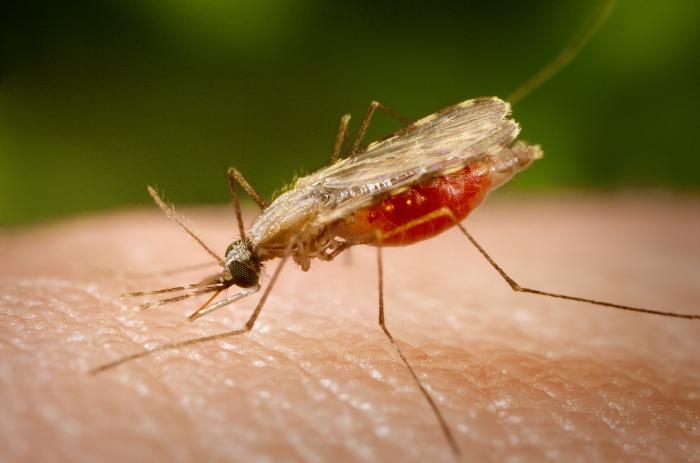Genetically engineered fungus knocks out deadly mosquitoes using scorpion toxins
A single spore can do what insecticides can't.

Mosquitoes aren’t just annoying summer-time pests: they also put about half of the world’s population at risk for malaria, infecting around 300 million victims annually. With increased insecticide use, populations of little blood suckers who’ve evolved resistance to our poisons pose a new risk.
A new study from the University of Maryland demonstrates how a mosquito-slaying fungus genetically altered to produce spider and scorpion toxins could help solve this insecticide resistance dilemma.
“The World Health Organization has called on new approaches, new types of insecticide, new approaches to knock back the mosquitos,” says coauthor Raymond John St. Leger, a professor of entomology. “Our products, our transgenic products, are one of the outcomes that were requested.”
The fungus used in this study, Metarhizium pingshaensei, is a known mosquito killer. However, it takes quite a while for the fungus to do the deed naturally.
“The fungus normally takes a very long time, because it want to drain the insect of its resources,” says St. Leger.
St. Leger and his colleagues wanted to speed the process up, so they created transgenic strains of fungi using two toxins from the North African desert scorpion Androctonus australis and the Australian Blue Mountains funnel-web spider Hadronyche versuta. The scorpion toxin blocks sodium channels and the spider toxin blocks both potassium and calcium channels, going beyond the impact of an ordinary insecticide. With those toxins in the mix, a single fungal spore is enough to infect and kill a mosquito. According to St. Leger, it doesn’t get much better than that.
Even before death, the study reports, nearly 100 percent of the insects infected by the hybrid fungi were rendered unable to transmit malaria in as little as five days, which surpasses the World Health Organization’s threshold for a successful vector control agent.

The best part? These toxins have already been approved by the EPA, and they only affect the targeted insects because of very specific promoters which only drive the expression of the toxin in the insect’s blood (the engineered fungal strains did no harm during a test run on honeybees). This means the toxin shouldn’t be able to run wild.
The University of Maryland research teamed up with scientists at the Institut de Recherche en Sciences de la Santé/Centre Muraz, Bobo-Dioulasso in Burkina Faso. Coauthor and graduate student Brian Lovett says this institute was instrumental in the development of insecticide treated bed nets.
“This area in particular has seen sort of the rise of this new technology, insecticide treated bed nets, which has done a whole lot to malaria in the area, but they’ve also seen sort of the decline of this, as resistance has come on the rise,” says Lovett. “New technologies, like the ones we are trying to develop, are hopefully going to be able to integrate well with these other technologies in development.”
St. Leger says that the fungus is suspended into locally available sesame oil, which is then spread out on locally available black sheets and hung in houses. Mosquitos are attracted to black, and if they rest on the sheets they will pick up the fungal infection, bringing them to their doom.
The researchers will soon test the spores on mosquitoes in an enclosure made of netting, as well as testing the fungus on similar species such as midges and gnats. St. Leger says it’s also important to keep an open dialogue with the people that could benefit from the product.
“We’re always getting more safety tests, always talking to people,” he says. “Local people, experts in the field, government. But in the terminology of trade it’s called the stakeholders, the people who will be impacted by our technology.”
